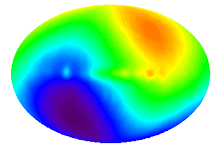Gut microbiota epithelial function and derangements in obesity
The gut epithelium is a barrier between the ‘outside' and
‘inside' world. The major function of the epithelium is to absorb nutrients,
ions and water, yet it must balance these functions with that of protecting the
‘inside' world from potentially harmful toxins, irritants, bacteria and other
pathogens that also exist in the gut lumen. The health of an individual depends
upon the efficient digestion and absorption of all required nutrients from the
diet. This requires sensing of meal components by gut enteroendocrine cells,
activation of neural and humoral pathways to regulate gastrointestinal motor,
secretory and absorptive functions, and also to regulate food intake and plasma
levels of glucose. In this way, there is a balance between the delivery of food
and the digestive and absorptive capacity of the intestine. Maintenance of the
mucosal barrier likewise requires sensory detection of pathogens, toxins and
irritants; breakdown of the epithelial barrier is associated with gut
inflammation and may ultimately lead to inflammatory bowel disease. However,
disruption of the barrier alone is not sufficient to cause frank inflammatory
bowel disease. Several recent studies have provided compelling new evidence to
suggest that changes in epithelial barrier function and inflammation are
associated with and may even lead to altered regulation of body weight and
glucose homeostasis. This article provides a brief review of some recent
evidence to support the hypothesis that changes in the gut microbiota and
alteration of gut epithelial function will perturb the homeostatic humoral and
neural pathways controlling food intake and body weight.

沒有留言:
張貼留言